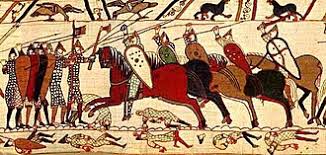Understanding the Bayeux Tapestry: A Historical Masterpiece

Introduction
The Bayeux Tapestry is not just a remarkable artwork; it is a pivotal historical artifact that offers a glimpse into the events of the Norman Conquest of England in 1066. Stitching together a narrative that transcends centuries, this tapestry is invaluable for historians and enthusiasts alike, reflecting the era’s craftsmanship and storytelling methods. The relevance of the Bayeux Tapestry extends beyond its artistic merit, as it has significant implications for understanding medieval history and narrative form.
Historical Significance
The tapestry, measuring approximately 70 meters (230 feet) long, is believed to have been commissioned in the 11th century, shortly after the events it depicts. Created in England, it boasts intricate embroidery that illustrates the lead-up to the Battle of Hastings, the battle itself, and the aftermath of the Norman victory. Each panel is rich with detail, from the clothing of the figures to the ships sailing across the English Channel, which provides insights into the socio-economic conditions of the time.
Recent Developments
In recent times, the Bayeux Tapestry has attracted attention not only for its historical value but also for its preservation efforts. With the growth of international tourism, discussions have intensified surrounding its display, leading to proposals for relocation to the UK as part of an exhibition. In 2023, French cultural officials confirmed that negotiations were underway regarding the tapestry’s potential exhibition in the UK, highlighting its importance as a shared cultural heritage.
Importance for Modern Audiences
The Bayeux Tapestry continues to resonate with audiences today, serving as a study of narrative and a means of understanding conflict and conquest through art. Educational institutions frequently use its imagery to illustrate concepts in subjects ranging from history to art. Additionally, as digital reproductions and virtual tours become more prevalent, the tapestry remains accessible to new generations across the globe, ensuring that its story lives on.
Conclusion
The Bayeux Tapestry stands as a testament not only to the artistic skill of its creators but also to the enduring stories that shape human history. As discussions for its future presentation evolve, this historical masterpiece remains a critical link between the past and present, illuminating the complexities of medieval life and the art of storytelling. For audiences worldwide, it serves as an inspiration to explore the intersections of history, art, and culture.









